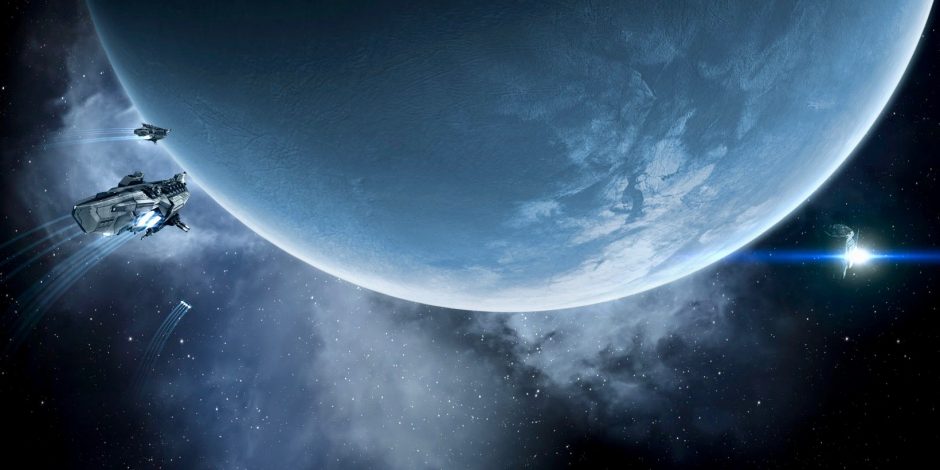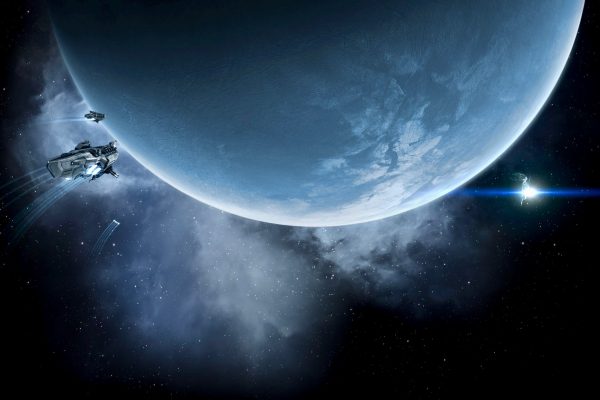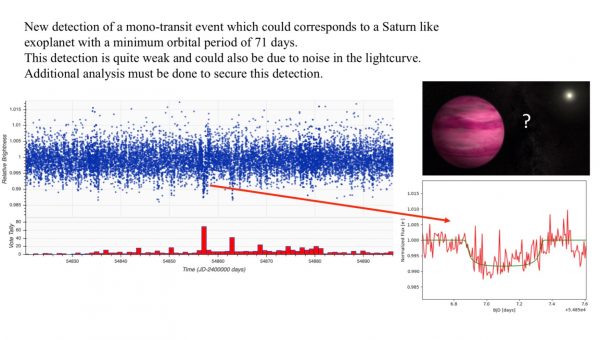Discover exoplanets while playing

Two years ago, the Icelandic company CCP, which markets and operates the EveOnline galactic conquest game, launched the “project discovery”, a concept of citizen science included in the game. Using the star light curves taken by the European CoRoT satellite (COnvection, ROtation et Transits), the goal was to try to discover periodic decreases in the star’s luminous intensity. This decrease, or mini eclipse, could mean that an exoplanet passes in front of its star, a phenomenon called transit in astronomical jargon. Announced with great pomp at the Reykjavik fanfest in April 2017 with the presence of Michel Mayor who acted as a guru in the game, project discovery was officially launched on July 11, 2017.

In the video game EveOnline, players visit different planetary systems. (Image CCP)
The 176,802 light curves taken by CoRoT between January 2007 and October 2012 were therefore injected into Eve Online. The 3000 eclipse binary and planet candidates that had been detected by the CoRoT science team were also injected to facilitate the training of players to become familiar with the concept of transit. Indeed, a visual inspection can, in some specific cases, be more efficient in finding transit-like signals than an automated software. This is particularly true for finding transit-like signals buried in noise caused by stellar variability or for picking out individual, non-repeating transit events.
“The players are very curious and enthusiastic about participating in the search for exoplanets,” said Bergur Finnbogasen, project manager at CCP. The rest would prove to him that he was far below reality. In two years, no less than 230 million light curves analyses have been received by the Geneva Observatory, which agreed to collaborate on the project by examining whether the players’ analyses corresponded to exoplanet candidates. “We were surprised by the volume of files that CCP sent us,” recalls François Bouchy, a PlanetS member and in charge of analysing the players’ data, “and it was necessary to set up a team of three people to determine if the transits detected by the players could be the signature of an exoplanet ».
The process of evaluating the classification made by the players took a long time for several reasons. The first being of course the number of curves received, it was then necessary to check that each detection was not due to an instrumental effect, then it was necessary to compare the players’ detections with those of CoRoT and finally to verify in all the astronomical databases if these objects were already known.
Efforts that paid off and were unveiled at the Fanfest held June 21-23 in Toronto.”The players allowed us to identify a significant bug in the latest public version of the CNES CoRoT data,” explains François Bouchy, “in some CoRoT fields, eclipsing binaries were unfortunately used to correct the satellite’s jitter and accidentally introduced false transits that were revealed by the players ». This allowed CNES to review and improve the reduction of satellite data.
Several events identified by players correspond to “single-transit” events; potential transit signals that do not show repetition and would therefore have longer periods than the CoRoT observation period. However, many of them correspond to a time with a strong jump in the light curve due to an instrumental effect (offset pointing of the satellite). The final data reduction considerably reduced jumps but introduced a small residual effect that was clearly detectable by the players.
However, the players’ results are not limited to bugs and instrumental effects. New detections were made, including several new variable stars and new eclipsing binaries not listed in the final CoRoT catalog. Two new mono-transit events were also revealed by the players. If confirmed they could correspond to a Saturn-like exoplanet with a minimum orbital period of 71 days and another mono-transit that could correspond to a Neptune-like exoplanet with a minimum orbital period of 91 days.
These detections are still quite weak and require additional analyses to secure them. Complementary observations will certainly be programmed for the Swiss Euler telescope (1.2 m) located in La Silla (Chile) in order to confirm and validate the global nature of the new candidates identified by the players.
“It would still be fantastic if video game players could discover an exoplanet,” exclaimed Michel Mayor during the game’s launch. It’s not confirmed yet, but it seems to be within the realms of possibility.
Categories: Events, External Newsletter, News, Uncategorized

